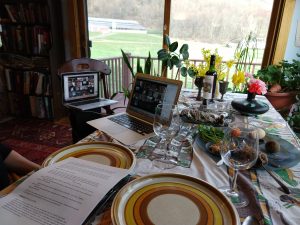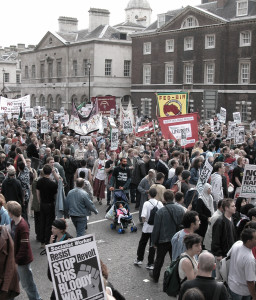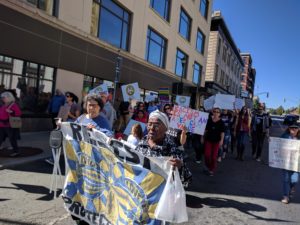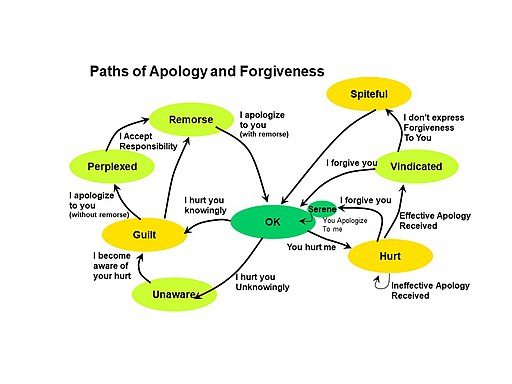Category: Shel’s Personal Life
If You Don’t Have A Big Bank Account–It Doesn’t Make You an Imposter!
Someone asked on a discussion group if members in the non-profit world ever experience “feelings of inferiority or imposter syndrome when surrounded by friends and family in the private sector who earn more income”–and this is my response (perhaps in time to encourage you to consider a New Year’s resolution not to obsess about money):
This is not just an issue in the non-profit sector. I have many friends in the marketing world who are multi-millionaires. Although I’m a business-sector marketing and sustainability consultant, I have far more modest income than they do, and every once in a while, the idea creeps in that maybe I have no right to call myself a marketer because I have not reached anywhere near their financial success. But then I remind myself that:
1) Money is not an end, but a means to various ends–and I’ve been extremely skilled at using other means to those ends. I even wrote a book on how to have fun cheaply, back in 1995 (The Penny-Pinching Hedonist). I have a great deal of abundance in my life; it just happens not to be based in the size of my bank account.
2) If my goal had been to be materially wealthy, I would have accomplished that. But my goal was to improve the world, and I have some legacy underneath that tent (and hope to have more).
3) I have a terrific life that many of those marketing geniuses probably envy: I am actively involved in making the world a better place, I travel, enjoy live music and theater, and fine food, and I get to make my career doing the writing, thinking, and speaking that I love.
Building a Ladder for New Nonviolent Activists
On a discussion forum for nonviolent (NV) activists, my friend David has been a consistent advocate for filling the jails, and has expressed frustration that so few people are willing. The discussion recently turned to encompass the question of property destruction (I’m an opponent). I shared my thoughts about both tactics, and added the concept of meeting people where they are and building a ladder for them to go deeper. I thought it might be useful to share it here, even though I recognize that it won’t be relevant to many of my business readers. You can see the entire conversation at https://thepowerdynamicofnonviolence.blogspot.com/2018/12/if-you-can-persist-in-face-of.html

@David Slesinger, it’s beginning to sound as if you feel that ONLY NV actions that result in arrests and jail are meaningful. I strongly disagree with that premise–and so would Gandhi (the local textiles movement), MLK (Montgomery bus boycott), and the Hebrew midwives Shifra and Pu’ah, who may have invented nonviolent resistance 3000+ years ago. (I’m at least not aware of any earlier documentation of a nonviolent action against state power than the scene in the Old Testament where Pharaoh confronts them.) The majority of Gene Sharp’s 198 NV tactics do not involve arrest.
I have been involved with hundreds of actions that provided meaningful protest and in some cases helped to change government policy that did not risk arrest.
Also, it’s important to give people a ladder. You have to meet people where they are ready. Most new activists take tentative steps at the beginning. Over time, some of them move up that ladder. Serving any jail time of more than a weekend or so is pretty high up the ladder. Serving a sentence of months or years is almost all the way at the top (a little below martyrdom) and many of us never reach it. You have told me many times about your frustration that so few people are willing to do as you’ve done.
Unknown raises excellent points about property destruction. Destruction of private property is a mistake both morally and strategically, for the reasons Unknown cites and also for its effect of making enemies of those whom other NV tactics would turn into allies.
I am a rape survivor. I have also experienced the break-in and looting/ransacking of apartments I was living in. They feel remarkably similar; the difference is in degree. Both are a violation. So was the time I was visiting my college after finishing, staying at the Gay Center–and a rock wrapped in a Nazi hate message came through the window. It wasn’t my property, but I felt just as violated.
I do make a distinction between property belonging to a single person (and that would include the merchandise inside a small store) and the use of property destruction aimed at the state or at e.g. military contractors–such as the actions of the Berrigans and their compadres in damaging draft records and nuclear missiles. WE should note that unlike looters, they got no personal gain, were really careful to avoid collateral damage to living creatures, and waited around to be arrested. They maintained the moral high ground even while destroying things. But this is extremely rare. Most instances of property violence are perceived as criminal or even terrorist by the public at large AND the power structure.
Progressives: Please Read–And Share
Like many on the Left, I was disappointed that a whole slew of brilliant progressives with the skills to be president failed to get traction. And I was dismayed by the Biden campaign’s sneak-attack success at undermining Elizabeth Warren’s chances just before Super-Tuesday, with the very public withdrawals and endorsements by Klobuchar and Buttigeig. If we had Ranked-Choice Voting and other long-overdue electoral reforms in place, this would not have been a problem. (Note: that second post is something I wrote back in 2007, outlining seven important reforms. At that time, Ranked-Choice was usually referred to as Instant Runoff.) But it left a lot of us feeling angry and left out.
With the withdrawal of Bernie and Elizabeth and their eventual endorsement of Biden in the weeks following, things shifted from who do we want as our ally to who do we want as our adversary? This is a very important distinction, brought to my attention by Erica Chenowith, who is known for her work showing that nonviolent struggle by just 3.5% of the population is enough to bring down a government. We will make more progress in a Biden administration than the current administration. We have already pushed Biden’s rhetoric well to the left and have given him the space to make the recent statements condemning DT’s racism.

I already voted, on super Tuesday. But if I lived in a state that was yet to have its primary, I would absolutely vote for Sanders in order to increase that leverage from the left. But that’s all it will do. Sanders will not be the nominee. That dream is over! While giving more strength to the Sanders coalition, we have to recognize that in November, barring some kind of miracle or catastrophe, Biden’s name will be on the ballot. And the more out of control DT gets, the more he tilts actively toward fascism as he has been doing with increasing strength ever since the impeachment failed, the more urgent it is to make the margin of victory so big that DT cannot steal it this time (the 2016 results will be under a cloud forever).
We need to fight for every vote in swing states even if that means having recounts. To delegitimize the current administration in every way possible.
The absence of DT’s actual name in this post is deliberate. It is one small way we reduce his legitimacy, and his bragging rights.
I was on an Indivisible NoHo call with our progressive Central/Western Massachusetts congressman, Jim McGovern, this week. He noted that Biden was not his first choice, or even his fourth choice. That’s true for me as well. I think of the 22 original candidates, I had him at about 17. But we lost that one. Again!
Yes, Sanders would have made a fine and successful nominee that I could have supported with a lot more enthusiasm. He was my second choice, after Warren. Yes, absolutely vote Sanders in the primary but recognize that Sanders will not be the nominee and this is about giving strength to the left to negotiate with Biden.
Amazon’s Two-Edged Sword

A marketer friend in Connecticut sent out a wonderful tribute to his 95-year-old mom and used her to illustrate several points about customer-centric marketing and customer service. In the course of this article, he waxed rhapsodic about Amazon. I see Amazon (and some other companies) as not always so wonderful–and the public having blinders on about its predatory practices. This is what I wrote back to my friend. The third link is actually a very complete summary of the issues:
* * *
Great piece! I love the way you take your mom’s everyday activities and spin them into marketing do and don’ts.
- They are a serious threat to the vibrancy of our downtowns. Can you imagine Stamford with only a few struggling chain stores? Goodbye to that nice falafel shop and Asian restaurant across the street from (Amazon-owned) Whole Foods (I’ve often eaten at one or the other on my way to NYC). Book stores, hardware stores, appliance stores–and all the traffic into town those stores bring–are increasingly shaky in an Amazon-dominated world. And when that foot traffic goes away (assuming it comes back after we’re finally out of quarantine), so do the restaurants, night spots, etc.
- Their labor record is very poor. Their treatment of independent publishers is not only very poor but IMHO a violation of monopoly rules. Did you know that Amazon, a retailer, takes the 55% industry-standard wholesaler discount instead of the 40% retailer level for its smaller publishers selling them physical books? (They do have much better deals for publishers on the books their subsidiary KDP prints on demand.) This is one of the two reasons they’re killing the independent bookstores (the other is that they’ve successfully trained the public to think of them first). Also, they present used and new versions of the same title on the same results page, which is a complete stab in the back to publishers–sort of like offering counterfeit designer watches and purses. I have no objection to selling used books (and keeping them out of landfills)–but not in direct competition with the same book, new.
- For a long time, Amazon didn’t charge sales tax, which was an especially cruel anticompetitive practice in that it not only hurt businesses who have to collect those taxes, but also reduced the availability of government services by reducing government revenues.
- Amazon has actively and repeatedly suppressed competitors. This includes using its enormous data on customer behavior and buying patterns to manufacture its own products, sold through its own channels. And students of the company’s behavior see evidence that once competitors are eliminated or demand spikes (as on household cleaning products during the pandemic), Amazon’s prices rise, sharply.
50 Years of Earth Day: A Planetary AND Personal Journey
50 years ago today, Earth Day was launched as a one-time event. Who would know it would not only become annual but turn into a massive worldwide movement that has changed our world for the better in so many ways?

The Environmental Movement is Now Mainstream
Since that first Earth Day, we’ve made a lot of progress. A few examples:
- Public awareness of climate issues–and of the lifestyle changes we can make to improve things–is at an all-time high
- Millions of people have taken to the streets to demand action on climate
- Science has made huge strides in areas ranging from green energy to biomimicry; amazing new green technologies are constantly becoming more efficient, less expensive, and more deployable
- Many countries have shifted away from fossil and nuclear toward clean technoogies such as solar, wind, and hydro–and these technologies are much more efficient than they were 50 years ago
- Veganism and vegetarianism (two of the easiest ways to reduce our personal climate footprint) are far more accepted, even in places like Germany that used to be quite hostile)
- From bringing our own reusable bags (pre-COVID) to discovering foods like tofu, the way we shop and eat has drastically shifted, even for those still eating meat
- Nearly every country in the world agreed to the Paris Climate Accord (which doesn’t go nearly far enough, and which the current US administration has pledged to leave–but it’s a start)
- A 16-year-old Swedish climate activist addressed the UN, arriving in the US aboard a green-energy boat (yes, I’m talking about Greta Thunberg)
- Almost every major company has at least a sustainability coordinator, if not a whole department–and these folks have drastically reduced the negative impact of business on the environment
- Here in the US, the well-thought-out Green New Deal is getting serious attention
- We’re beginning to recognize climate justice: looking at the environment from a lens that includes economic and social justice issues, such as why so many polluting plants are in poor communities and why so many of those communities are “food deserts” with little or no access to healthy foods
My Environmental Journey Started That Day
- In 1977, I was one of about 2,000 people and 1414 who got arrested at the construction site of the Seabrook nuclear power plant in New Hampshire. We had no way of knowing that our action would birth a national safe energy movement. On the 40th anniversary, I wrote about why this action was so important. (The link is to Part 1 of my 5-part series. There’s a link to the next installment at the bottom of each earlier one.)
- In 1984, I worked with my city counselor to get the first nonsmokers’ rights regulations in Northampton, Massachusetts. Very few communities had any protection for non-smokers at that time. I don’t think it’s a coincidence that within a few years, most restaurants in town were non-smoking and that the number of restaurants in town increased significantly.
- And in 1999, I founded and became the public face of the movement that saved a mountain right near my house.
It was the success of Save the Mountain that led me into the work of educating the business community on how to be profitable while saving the world.
I hope to be able to notch a fourth victory: helping to turn the business world away from a profit-only model and toward a model of making a profit through identifying, creating, and marketing products and services that turn hunger and poverty into abundance, war and violence into peace, bigotry into strength in diversity, catastrophic climate change into planetary balance, pandemics into global health, etc. I see business as a lever for creating the world we want.
This is not new. Social impact companies have been around at least since the mid-19th century, but it’s been on the fringe. Believe it or not, UK chocolate giant Cadbury was founded as a social impact company. But I think now we have the chance to change the entire business culture, so profitable business social and environmental responsibility becomes mainstream.
But There’s Still Lots to Be Done!
For all its positive presence, business is still a long way from solving problems it largely created. Pollution, resource depletion, and labor issues are just a few of many issues that need to be addressed, especially as world population grows faster than at any time in history. And governments are not always our allies. The present Brazilian and US federal governments, for instance, are actively sabotaging the eco-agenda. Each of us needs to make the difference we can make–and each of us CAN find a way to make that difference (contact me if you want help figuring out what the most impactful way for you and your business).
No Cost Resources and MY Gift to Help You Celebrate Earth Day THIS Year
Let’s start this Earth Day party off with something that will help you save energy, water, and money–my ebook, Painless Green: 111 Tips to Help the Environment, Lower Your Carbon Footprint, Cut Your Budget, and Improve Your Quality of Life—With No Negative Impact on Your Lifestyle. I normally sell this for $9.95, but as my Earth Day gift to you, you can get it at no cost. Just visit PainlessGreenBook.com and enter “earthdayblog” in the code box. This will also sign you up to my informative Clean and Green Club monthly newsletter.
A group based near me in Western Massachusetts, Climate Action Now, offers several Earth Day events starting this evening with a 6:30 ET panel of legislators and activists. This may be especially interest if you live in Massachusetts, but it’s virtual and open to all.
Keeping a Green Lifestyle in the Time of COVID-19
This morning, I read a few articles on zero-waste in Green America’s spring issue, published about a month ago:

There’s plenty in those three articles that absolutely makes sense in today’s world–but there’s also quite a bit that’s at least temporarily obsolete.
With tips about how to bring reusable containers into the stores and organizing used clothing sharing events, it made me nostalgic for that very recent time before everything changed. And with a strong focus on combining climate, waste, and social justice, it was a refreshing reminder at how much more aware even we green folks are than most of us were 20 or 30 years ago.
True, it’s a bit more challenging to maintain a green lifestyle these days. But for the planet, it’s been a chance to recharge. The enormous reduction in motor vehicles on the road, planes in the sky, and factories running at full capacity allows our air and water to clean and regenerate themselves. And not to be Malthusian (and certainly not that I think this is a good thing), but the massive wave of deaths does reduce strain on the earth’s resources.
These positive changes have been somewhat offset by a dramatic uptick of certain other resources. Medical equipment, sanitation products, and even toilet paper are in short supply–and even more concerning, so are the medical personnel and hospital beds. And I’m guessing that as a world population, we’re generating a lot more waste and reusing a lot less.
In our own two-person, one-cat house, we’ve shifted some things as well. Our new routines might provide useful examples of how to be protected while staying as green as practical, so I’ll share a few of the details.
Water Use
What with not only washing our hands constantly for a full 20 seconds but taking a new glass or spoon every time and throwing our clothes in the washing machine every time we go to the store, our water use is probably triple what it was. We used to run the dishwasher about two, maybe three times in a typical week; now it’s more like five or six.
But even when we’re washing our hands so many times per day, we don’t turn the water on full force, and we turn it off when we’re not actually rubbing our hands under the faucet. We use just enough water to do a good job.
Fortunately, our heat and hot water are both on a green system powered by residual heat from cow poop and food waste running through our farmer neighbors’ methane digesters, and we live in an area where water is not scarce.
Cleaning Supplies
We’re also using somewhat more disposable paper products–but not all that much. For years, we’ve tended to use rags rather than paper towels to clean surfaces or mop up spills. But we are using paper towels or wipes to do things like keep our hands from touching door handles going into or out of a public place, wiping down shopping carts, etc. And of course, disinfecting the packaging we buy is something we never did before, and that uses a few paper towels.
My wife made us each a reusable mask. Since we’re usually shopping no more than once a week, it’s easy to wash them between uses.
We are not stockpiling, and we think the idea is silly. We’ve always bought toilet paper in 12-roll packs, and when we’re about half through, we get another 12-pack. When our bottle of dish soap gets down to half, we buy one more bottle. These patterns have not changed.
We are using more laundry detergent. Normally, we use a reusable laundry ball in the washing machine. We still do for regular wash, but for those post-shopping loads, we use hot or warm water, which the laundry ball isn’t designed for. We are almost through the box of earth-friendly detergent we bought about four years ago, but when that’s done, we inherited a huge tub of Arm & Hammer natural laundry powder when my stepfather died in 2018. I expect that it will last us the rest of our lives, considering we mostly use the laundry ball.
Packaging
As green consumers, we don’t bring a huge amount of packaged food into the house to begin with, and we save reusable glass and plastic containers when we do. We actually choose our brands of yogurt and hummus in part by whether we can put the containers and lids through the dishwasher and reuse them–and we use them until they break, usually at least 20 times. (We also factor in taste, quality, and price, of course.) Since forever, we use those jars to store bulk beans and grains, spices, and flours. Now, if we buy boxed cereal, for example, we wipe down the box and then either take the inner liner out and put it in a box we just finished, or put the cereal in jars.
When we buy bread or loose produce, we remove it from the plastic bag it came from and put it in one we’ve had pre-crisis; we have an entire hamper full of them. Cans get washed down with disinfectant, but other than cat food (which we buy in cases so the cans are protected), a small amount of canned beans, and coconut milk, we used almost no canned products anyway.
Since we’re not driving much, we have the luxury of leaving non-perishables in the car for a few days to decontaminate on their own–and while we still disinfect when we bring them in, we’re not quite as hyper-vigilant
Most of our produce is harvested at or near our home by the CSA farm we belong to, farmers at the local farmers markets and farm stands, or in our own garden. We’re washing everything more carefully. We’re washing citrus with soap. We’re peeling items like salad carrots instead of just grating the peels in with the rest of the carrot–but leaving peels on for cooked foods when appropriate, since heat kills the virus.
For years, we’ve kept reusable totebags in the car and brought them with us into stores. Now, we leave them in the car, load everything back into the shopping cart, unbagged, after it’s scanned, and then load them into our own bags at the car. So we’re still not getting bags, for the most part. This does mean we avoid shopping on bad-weather days.
Transportation and Shopping Choices
We live out in the country, seven miles from town. We’ve always ganged our errands into as few trips as practical, but now we’ve become almost religious about it. Going through the decontamination process every time we go shopping is annoying enough that we’re trying to shop no more than weekly, and preferably every two weeks. When we go, we think about everything we might need for 14 days, where we can get it with the fewest stops (rather than the lowest prices), and what route minimizes the miles to visit those stores.
One of the greenest things to do at this time is to actively support local independent businesses. We’ve shifted a much bigger percentage of our shopping dollars to the businesses we want to make sure survive, the ones that make our community a desirable place to live. We’re also ordering more online from these local businesses, and either picking up curbside or getting things shipped.
And sadly, we can’t car pool anymore. When we meet our friend who lives a mile from us to hike together (10 feet apart), she and we arrive in separate cars.
I haven’t needed any clothing except a package of socks I ordered online and picked up curbside. I would probably not go to a used clothing store right now, because it could be a germ factory. But I did arrange no-contact pickups for some books someone was giving away on our local Buy Nothing community, and for some items I had to offer. I let the books sit in the car and I will wipe them down before I shelve them.
Super Tuesday Could Decide Our Fate
Along with much of the nation, I get to decide what vision for the next four years inspires me. As a progressive, I have many friends in both the Warren and Sanders camps.
I think either Bernie or Elizabeth would do well in debates against DT and win big against him, IF the likely Dem voters in swing states are allowed to vote and if ballots are counted fairly. Those are two very big IFs, and they will be an issue with pretty much any Democratic candidate. For Sanders, it’s even more of an issue because the party is so hostile to the idea of his nomination that they will do whatever they can to sabotage it. One only has to look at the dirty tricks the Hillary Clinton campaign used against him four years ago.
But my big worry with Bernie is he may get elected but be functionally unable to govern, because the Dem establishment will block his agenda at every turn, as the Repubs promised but failed to do with DT. Bernie is not a team player or a negotiator and he will get sabotaged.
I also think Elizabeth is smarter and her plans are more well-thought-out. She would prove that HRC didn’t lose because she’s a woman but because she 1) came with a whole lot of negative baggage, such as the pay-to-play scandal, 2) ran a terrible campaign (as just one example: failing to visit Wisconsin even once between the convention and the election, despite losing hugely to Sanders in the Wisconsin primary), and 3) faced a disinformation campaign funded by at least one foreign government. I voted proudly for Bernie in the primary four years ago (and not-so-proudly for HRC in November), but I’m voting for Warren tomorrow. I live in Massachusetts and feel she’s done an excellent job as my Senator.
I do agree with my Bernie-supporter friends that if she does poorly on Super Tuesday, it’s time for her to endorse Bernie and get out.
I have to wonder yet again why the Dems didn’t bring us mandatory hand-countable paper ballots (I wrote that post back in 2007) and ranked-choice voting when they had the chance in ’09. I don’t think DT would be squatting in the Oval Office if there had not been active voter suppression (see that top link in this post again) and if there were paper-ballot recounts in those three very marginal states that put him over the top–and yet the Dems ignored (and may have actually sabotaged) Jill Stein’s effort to get recounts there. Their failure means I and millions of others do not accept the 2016 results as legitimate. It would have been healthy for the country to settle the question of who actually one.
I also don’t believe DT would be president if we’d had ranked choice four years ago. We might have President Hillary Clinton, President Ted Cruz, or President Bernie Sanders–but we would not have this lying, cheating, mean-spirited sociopathic bully destroying our foreign policy, our environment, our education, and our human rights.
I am proudly voting for Warren tomorrow. And in response to those who say a vote for anyone other than Sanders is ultimately a vote for Biden, let me quote democracy activist and constitutional scholar Jennifer Taub:
Q: Bernie supporters told me that a vote for Elizabeth is a vote for Biden. Is that true?
A: No. A vote for Elizabeth is a vote for Elizabeth. Bernie’s camp is reasonably worried that nobody will have a majority of delegates when they get to the convention this summer?.
There are rules in place that Bernie helped write in 2016. Under those rules, on the first vote at the convention, pledged delegates must vote according to our primaries. If nobody has a majority, then there will be a second vote. On the second vote, delegates can realign. And so on.
It’s quite likely that neither Bernie nor Biden nor Warren will have a majority at the outset. So, all three of them will be viable and there will be some serious horse trading.
Please join me in voting for the future we want, and not any kind of “lesser evil.” We might have to do that in November, but we certainly don’t have to do it now.
C, J, H: My Three “Brogan Words” for 2020, Part 3
Healing
 This year, healing will have both a personal and a global component, starting with a deeply moving experience in mid-December. In August, 2018, my stepfather was in the crosswalk in front of his apartment, on his way to his daily 3-mile jog. He had activated the flashing light and was making his way across when a driver, looking at the GPS on the phone in her lap instead of the road, struck and killed him.
This year, healing will have both a personal and a global component, starting with a deeply moving experience in mid-December. In August, 2018, my stepfather was in the crosswalk in front of his apartment, on his way to his daily 3-mile jog. He had activated the flashing light and was making his way across when a driver, looking at the GPS on the phone in her lap instead of the road, struck and killed him.
On December 16, 2019, we finally got our day in court. In collaboration with my sister and my wife, we had submitted a statement more than a year earlier saying we didn’t feel incarceration would serve any purpose, and we proposed instead that the driver perform community service by speaking about distracted driving to audiences that would include high school students. This came out of our belief in restorative justice, and not out of any human connection with the defendant.
But that connection came when we went to court. I read my statement and added some unscripted thoughts based on information that had come to light since I’d submitted it. She read a deep and sincere apology. We both cried during our statements.
After she was sentenced to three years of probation with 200 hours per year of community service, half of it speaking, I went up and hugged her, and then we all (the defendant, my wife and I, and our respective lawyers) found a meeting room and spent about 40 minutes together, forging a connection that I think will be lasting. Before the hearing, I never in my wildest dreams thought we might become friends. Now I think that’s quite possible.
I wrote up that day in some detail in the Gratitude Journal I’ve posted daily on Facebook since March, 2018. And I heard from several people that my account was one of the most moving things they’d read in a long time. The Gratitude Journal, by the way, has deepened my life in many ways, but that’s for another time.
I don’t think it’s a coincidence that this hearing was a day after Shonali Burke sent out her newsletter with her three Brogan words, and that she and I have been emailing about her newsletter, and my promise to her that if I came up with the words, I’d share them with her.
So that’s on the personal side. Let’s touch on the global side of healing.
For me, healing is bound up with justice. All of the work I do to make the world better has both a healing component and a focus on justice. Whether I’m attempting to help heal an ill individual (I do send prayers when asked), a threatened ecosystem, or a rift between very different communities with different culture and values, these two parts will be there.
And especially when there’s so much division and even hatred in our society today, it’s very challenging to find the positive, find the places of agreement, and work outward from there to mutual respect even though our conclusions–coming out of those widely divergent values and cultures–may be so different.
This has been a challenge my entire adult life, starting when I was 17 or 18 and at a demonstration at a military base near my college in Ohio. I found myself drawn to the fences, where a few of us were starting to talk with the soldiers on the other side of those chain-links. And I found that this felt really powerful.
I’m far from an expert in cross-barrier dialogue, but I find that the more I do it, the easier it gets. Even with my limited skills, I work really hard to find ways for people who disagree to talk and listen with each other. And the opportunities are all around us. Over these fifty years, I’ve had conversations not just as a progressive talking with conservatives but also as a Jew talking with Arabs and Muslims, a bisexual interacting with and educating both straights and gays (separately), a believer in conscious capitalism working with socialists who have absolutely no use for the business world, a believer in minimum standards of living for poor people who gets into ardent discussions with uber-capitalists who think anyone can claw their way out of poverty, a techno-klutz among geeks and a whiz kid among Luddites. Some of these have been highly structured, others are casual conversations.
As I said, opportunities for dialogue are all around us.
I hope you’ve enjoyed my three words and the rationale and goals underpinning them. You’re welcome to share this with friends and colleagues–and to post your own three words in the comments.
If you missed the earlier posts, please click to read Part 1, Clarity, and Part 2, Justice,
C, J, H: My Three “Brogan Words” for 2020, Part 2
Every year, bestselling author and social media visionary Chris Brogan challenges his huge reader base to come up with three words to provide focus for the coming year. This year, I decided to take the challenge for the first time since 2016. My three words are:
- Clarity (click to read Part 1, where I discuss this word)
- Justice
- Healing
Justice

Today’s installment is about Justice, and how it shapes both my career and my activism.
My career has evolved quite a bit from its founding (as a term-paper typing service!) in 1981. For the past several years, I’ve focused my writing, speaking, and consulting on helping business turn hunger and poverty into abundance, war into peace, and catastrophic climate change into planetary balance. By showing companies how to make a profit doing this, I hope to leverage far greater change than I would if I tried to motivate them through guilt, shame, and fear.
Lets make this concrete: I listed several benefits for each of five different examples in this blog post.
Ready to know more? In the very early phases of this shift in my business, I did a TEDx talk, “Impossible is a Dare.” (you have to click on “Event Videos”, and then on my talk). It’s a nice 15-minute introduction to this idea as it existed in 2014; I’ve refined it quite a bit since then. A much deeper introduction is my 10th book, Guerrilla Marketing to Heal the World, endorsed by Chris, Seth Godin, Chicken Soup;’s Jack Canfield, Joel Makower (Executive Director of GreenBiz.com) and many other business and environmental leaders. And of course, I’m happy to talk to you about how I can be a “Sherpa” on this journey for your organization.
But now, let’s go back to the activist side. In order to talk about Justice, I also have to talk about Injustice: what we’re trying to change.
And from there, how I personally am working to change injustice into justice through community-based activism: the work I do in my non-career time. There have been a few times in my life where that work dominated my day and pushed the career part off to the side. This is one of those times.

As a citizen of the US, I’m deeply concerned about the attack on our planet and its people (and other living beings) by the current federal government. This government and its most visible spokesperson have viciously attacked immigrants, people of color, people without a Y chromosome (not male, in other words) or who don’t identify with the gender of their birth or any gender, people who are not Christian or even Christians who condemn him, people with disabilities, people suffering in poverty who face attacks on safety-net programs such as SNAP benefits (formerly known as food stamps) as well as authoritarian responses to homelessness, people who’ve survived crimes this government doesn’t view as important (such as sexual harassment), and even 16-year-old climate activist Greta Thunberg–as well as people who might be likely to vote for someone other than that very visible spokesperson.
Humans, at least, can defend themselves. Forests, oceans, the air we breathe, the water we drink, the plants and animals that we share our planet with–they need human beings to defend them against the brutal attack by this administration. Since January 2017, this government has rolled back dozens of environmental protections, stripped government websites of information about issues from the human impact on climate change to toxic pollution databases, barred government scientists from speaking out, and of course, pulled the US out of the Paris climate accord.
As of October, 2019, that same visible spokesperson had lied at least 13,435 times while in office. He has violated his Oath of Office every single day since he was sworn in, because he refused to divest himself of emolument-laden business interests and thus undermines the Constitution; he illegally uses his position for personal enrichment. He even went so far as to order the next G7 Summit held at his own golf resort (public pressure forced him to walk this one back; even Fox raised an eyebrow). And of course, there were the two violations so egregious that they led to his impeachment. I would have preferred a much fuller bill of criminal activity (this link lists nine potential counts as far back as July, 2018).
But the problem goes far deeper than one corrupt and mean-spirited individual in a position of great power.
As a citizen not just of the US but also of the world, I worry to see similar patterns repeating in many other countries, among them Brazil, Hungary, India, and Bolivia–and less intense versions attempting to rear their heads in places like France and UK.
I’ve been an environmental and social justice activist since October, 1969. That’s just over 50 years. Since that time, I’ve done much to improve the lives of my fellow residents of Earth, whether human, other animal, plant, fungus, or other lifeforms. I’ve been involved in numerous campaigns, and was glad to play a role in winning some of them. But there’s so much more to be done!
Each of these situations involves many cases of justice denied. I will do what I can to turn that around; I will continue to write and speak and act and organize and demonstrate and lobby from a place that says we are better than this, that we don’t accept this as normal, and that we are not willing to turn the clock all the way back to 1930s Germany. And I will continue to take comfort in the small victories we win, and the many friends I have made in the Resistance who prove to me that we are, indeed, better than this.
And each of us has an impact, often far greater than we realize at the time. Never accept that you cannot make a difference as an individual! But recognize that it’s easier to make that difference if you work with others.
I can take direct credit for victories ranging from a crosswalk at an intersection that desperately need one to starting the movement that saved a mountain when the “experts” thought our victory was impossible. And I’m far from done.
In May, 2019, my wife and I were accepted as sanctuary accompaniment volunteers, helping protect an upstanding immigrant who has to live in a church because he would be deported if caught outside the grounds. This is a hard-working man who just wants to provide for his family, including three children born in this country. He has lived in the US for nearly two decades, and in the church for more than two years.
A month later, we participated in an eight-person delegation to stand witness outside the prison holding up to 3000 migrant teenagers in Homestead, Florida. That prison, like the far worse one in Tornillio, Texas, was closed due to public outcry. The affinity group we went with is called Jewish Activists for Immigration Justice of Western Massachusetts. In February, we will be part of a ten-member JAIJ delegation doing relief work on the border at Brownsville, Texas and Mataoros, Mexico. Despite our tiny numbers, we’ve had a lot of influence, because we’ve been doing talkbacks, media interviews, and multiple public events since our return from Florida, and we’ve raised thousands of dollars to support the relief mission.
As in all my environmental and social work these 50 years, I hope to see my work become obsolete and unnecessary, because the problem has been fixed.
I dedicate my 2020 work for justice to the spirit of Frances Crowe, of Northampton, Massachusetts. She requested, for her 100th birthday, a demonstration with 100 signs representing 100 causes. She got 300 people marching in the streets, and I think she got her 100 causes, too. A few months later, she attended one of our public talks about the Homestead Detention Center just two weeks before she died. She was working on a climate scorecard for individuals to observe and improve their behavior at the time of her death.
I first met Frances at one of those actions that turned out later to have made a huge difference. She and I were both among the 1414 people arrested in 1977 while occupying the construction site of the Seabrook nuclear power plant, in New Hampshire. She was 58; I was 20, and I didn’t have a leadership role. When we got out, we discovered we’d birthed a nationwide safe-energy movement.
Part 3, on why I chose “Healing” for my third word, went live on January 20. Please leave your own three words (or any other appropriate comment) in the comments. Note that they are moderated, so don’t bother spamming.

